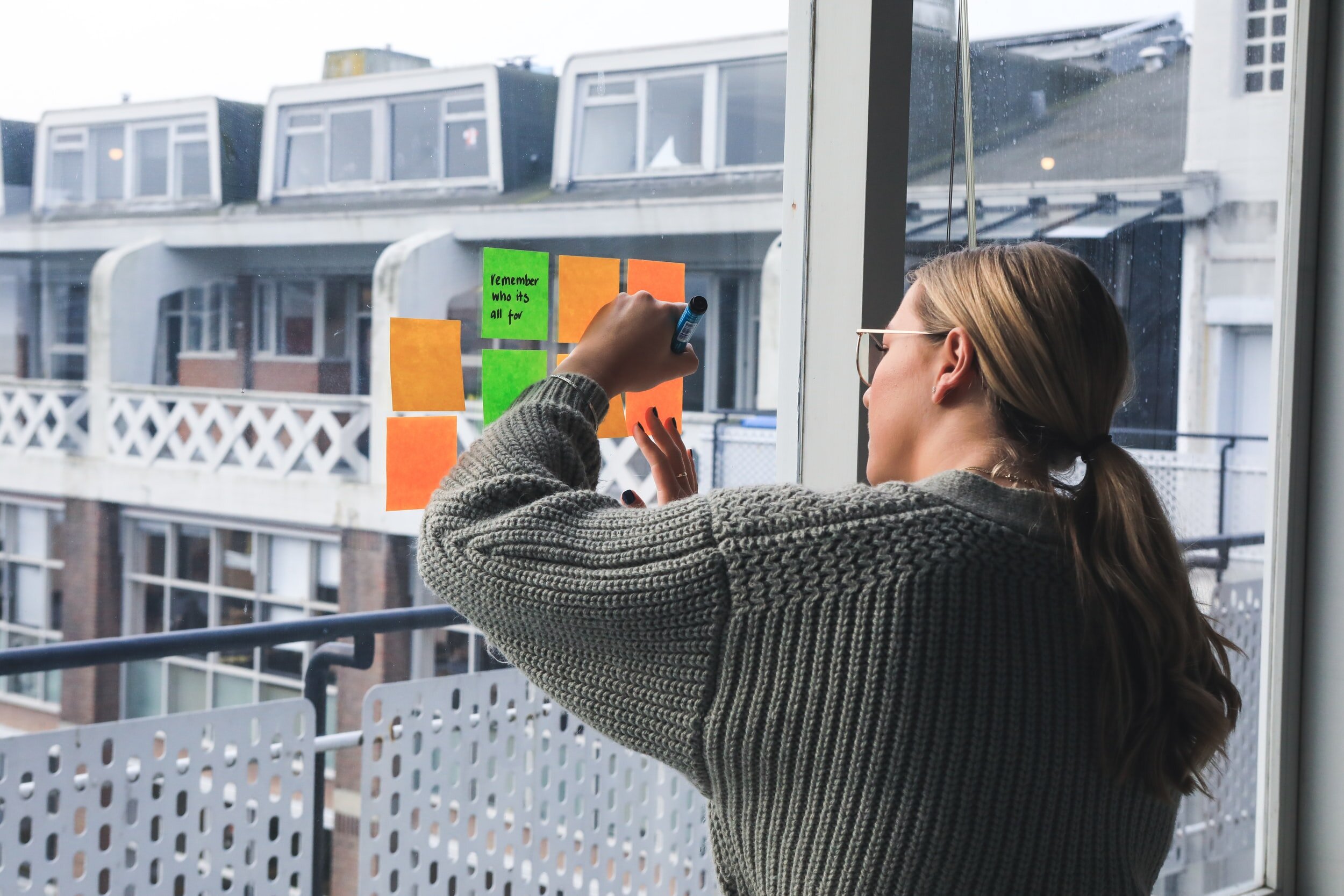You're in the behaviour change business
Maybe you’re a government official charged with improving community wellbeing.
Perhaps you’re a council official trying to get an important new project across the line.
Or maybe you’re a community organisation shifting from a service-delivery model to an influence and advocacy model.
Either way, your work requires you to influence people’s behaviour.
The old way was to command or coerce people what to do. Do this; or this bad thing will happen.
That approach works when information is scarce but that’s rarely the case anymore. The internet has democratised information.
It's not enough to command and consult anymore.
So how do you influence behaviour change? This article will introduce a 3-part model, based on a tonne of research, to guide your behaviour change work.
Image shows a windsock blowing in the wind. Image by @richardhorne
What are the conditions for behaviour change?
For decades, researchers have been studying what influences human behaviour.
The causes are varied and complex. And the studies are numerous.
In 2014, a group of researchers in England started analysing these numerous studies to see if they could identify the conditions that enabled behaviour change.
Here's what they discovered.
If you want to change people's behaviour, you need to work on their capability, opportunity and motivation.
Image shows a a person pointing to a blackboard with maths equations written on it. There are books and a desk in the foreground. Image by @jeshoots
Behaviour change (B) = Capability (C) x Opportunity (O) x Motivation (M)
This is the COM-B Model. You can learn more in the Decision Lab’s Reference Guide and the official Behaviour Change Wheel website.
Increase any one of those three conditions of behaviour change, and you increase the chances of a person changing their behaviour.
Capability
People won't change if they can't. You need to ensure people have the knowledge, skills and abilities to do things in a different way.
Opportunity
People need to have the time, energy, resources and permission to behave differently. Otherwise, your best engagement efforts will be ignored.
Motivation
People need to understand why they should change. Motivation is about the conscious and unconscious beliefs that influence behaviour. If they don't want to behave differently, they won't.
The model is simple enough. But what does this mean for your work as a behaviour change agent?
Image shows a woman pasting post-it notes on a window and writing on them. Image by @magnetme
How to apply the COM-B Model
We often see purpose-led organisations doing a good job of identifying the impact they are working towards. Reductions in child poverty. Improvements in literacy rates. Residents proud to live in our city. Lives transformed through physical activity.
What is often less clear - and therefore left to chance - is their strategy for getting there.
The COM-B Model provides a structure for thinking about how to achieve the impact you seek.
The most impactful organisations look at all three conditions for behaviour change to assess where they might best add value.
However, I have a hunch that many organisations unconsciously tend towards one of the three conditions for behaviour change more than the others.
When you tend towards capability, you fall into the “training trap”. You assume that people just need the right training and then they will be able to achieve the change they desire. But sending somebody on a course will be no good if there are some underlying barriers preventing them from ever having the opportunity to apply what they have learned.
Some organisations tend towards motivation. They fall into the trap of preaching, convincing and selling in order to create behaviour change. But this is like advertising expensive cars at a soup kitchen. You might create demand, but this is pointless if there is no opportunity.
An example in practice
One organisation from my own experience might help to illustrate how to apply the model.
Lifehack was a systems-level intervention in youth mental health and wellbeing in Aotearoa New Zealand.
Over 2013-2017 we grew the capacity of the system to support the wellbeing of young people, with an emphasis on co-design, prevention and capability building.
At the start, Lifehack was all about creating apps to improve young people’s mental health. The assumption was that young people had the motivation to improve their mental health but lacked the capabilities to do so.
Gradually, we shifted from the app focus to working with people across the system who supported youth mental health and wellbeing.
As we tested new approaches, we started to address all three conditions for behaviour change:
Building capabilities to influence youth wellbeing
Creating opportunities to strengthen youth wellbeing strategies in organisations and across the youth sector
Enhancing and sustaining motivation to take action, learn, adapt, improve and persevere.
Using the COM-B model helped us to identify how our interventions contributed to a bigger impact model, and helped us to make decisions within each of our programmes.
Here you can see the COM-B model applied to an organisation’s impact model. The three conditions for behaviour change (capability, opportunity and motivation) are listed in the green section. These contribute to behaviour change in organisations, the youth sector, and the youth workforce (listed in the blue section). In turn, this contributes to outcomes for young people (listed in yellow).
Making change stick
Managing change is never straightforward. In fact, you can never truly manage change in the real world. As soon as you influence something, that influences something else - which in turn can have impacts you might never have anticipated.
But we can navigate change.
If you'd like an independent perspective of how to navigate change using the COM-B model, take the next step and schedule a conversation with our team.





